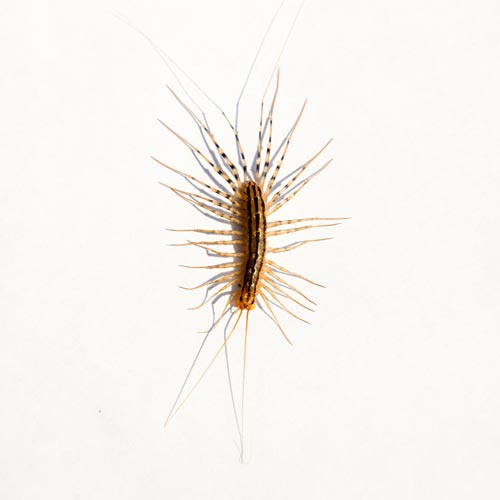Description
| Size | 1.5” |
| Characteristics | Grayish-yellow; three dark stripes on top of the body. |
| Legs | Up to 30 |
| Antennae | No |
| Habitat | Attracted to damp and dark areas, such as beneath leaves and stones or inside of crawlspaces and bathrooms. |
| Habits |
|
| House Centipedes in the Pacific North West | House centipedes are a common pest throughout the United States. With fifteen pairs of very long and slender legs, these invertebrates have a unique and somewhat scary appearance. However, they are not aggressive and mainly feed on other pests such as spiders or cockroaches. House centipedes can be found both outdoors and indoors, typically in dark or damp areas. Though these creatures are not considered harmful, they can be a nuisance if they are sharing our living spaces. |
| House Centipede Habitat | House centipedes are drawn to shaded areas with ample moisture. Outdoors, this often means beneath stones or inside of damp leaf litter. Indoors, house centipedes are typically found in damp areas such as cellars or bathrooms. Since these creatures are so drawn to moisture, an abundance of house centipedes in your home could indicate that there is an underlying moisture problem. Both indoors and outdoors, house centipedes feed on insects and spiders, which can help control the populations of these pests naturally. |
| House Centipede Behavior, Threats, and Dangers | House centipedes are not aggressive, and their weak jaws are often incapable of penetrating human skin. If they do manage to bite a human, their bite is usually no worse than a bee sting. However, house centipedes do have a set of poison claws located right behind their head, which allows them to poison and paralyze their insect prey. Though house centipedes can have a positive impact on the environment by controlling insect populations, they can be a bother if they manage to get indoors. If you notice an outbreak of house centipedes on your property, contact your local extermination professionals for a quick and safe removal. |
